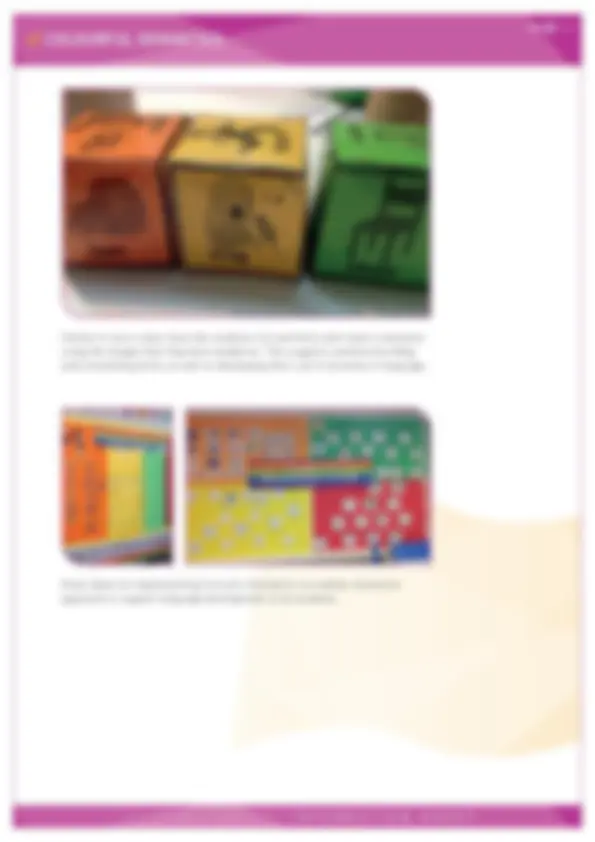




Study with the several resources on Docsity

Earn points by helping other students or get them with a premium plan


Prepare for your exams
Study with the several resources on Docsity

Earn points to download
Earn points by helping other students or get them with a premium plan
Community
Ask the community for help and clear up your study doubts
Discover the best universities in your country according to Docsity users
Free resources
Download our free guides on studying techniques, anxiety management strategies, and thesis advice from Docsity tutors
Colourful semantics is a targeted approach to support children with their sentence building and to teach them about sentence structure. It was developed by ...
Typology: Exercises
1 / 4

This page cannot be seen from the preview
Don't miss anything!



Colourful Semantics was created by Alison Bryan with the aim of helping individuals to develop their grammar and is rooted in the meaning (semantics) of words. The approach is based on sentence structure, cutting up each type of language into their thematic roles and then colour coding them. There are four key colour coded core vocabulary stages and additional colour categories have been developed for adverbs, adjectives, conjunctions, and negatives.
Colourful Semantics can be used to help children with a range of Speech, Language, and Communication needs, including but not limited to:
Specific Language Impairment Developmental Delay or Disorder Autistic Spectrum Disorder Down Syndrome Literacy Difficulties Traumatic Brain Injury
Colourful Semantics has also been used to help adults and young adults to re-learn language following Stroke and Traumatic Brain Injury.
There are many benefits to using Colourful Semantics that support all areas of communication, not limited to just semantics. Key areas targeted, but not limited to, are:
Building sentence length Encouraging the use of wider vocabulary Developing confidence in answering questions Developing the use of nouns, verbs, prepositions, and adjectives Improving story telling skills Skills are transferrable to written sentences and written language comprehensions. Approach can be carried out individually and/or in a small group setting.
PSI-3718D-2025-
Who
What doing
What Where
// COLOURFUL SEMANTICS
Colourful Semantics is used to help children organise their sentences into key levels. It is used in stages and helps to develop language and vocabulary in addition to grammatical structure. Colourful Semantics can be used with children of all skill levels. It can be used with those who are starting to develop language and have limited vocabulary as well as those who are confident talkers but struggle to organise the grammatical content of their sentences.
When teaching Colourful Semantics there is a specific structure of how to teach each level before building onto another.
LEVEL 1: WHO LEVEL 2: WHAT DOING LEVEL 3: WHAT LEVEL 4: WHERE
As the child develops the skills, you build up the sentence strips to accommodate their skill level.
For example:
Level 3 Sentence Strip
These sentence strips can be laminated and placed on the child’s desk to support language output throughout the day, thereby enabling them to apply these skills to other contexts, not just English lessons, eg supporting word problems in maths.
What doing
Level 4 Sentence Strip
Who What Where
What doing
Who What
// COLOURFUL SEMANTICS
Similar to story cubes, have the students roll each dice and create a sentence using the images that they have landed on. This supports sentence building and storytelling skills, as well as developing their use of all areas of language.
Great ideas for implementing Colourful Semantics in a whole classroom approach to support language development of all students.